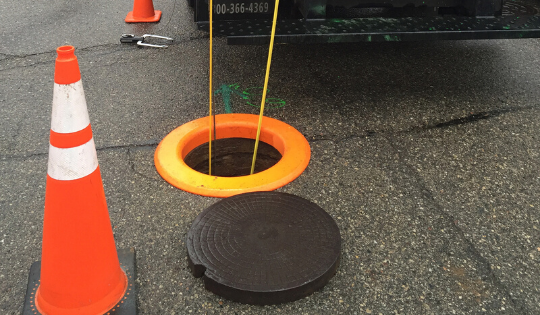What is a Cured In Place Pipe Liner?
Cured in place pipe, or CIPP refers to a technique that can be used to repair storm drains, sanitary sewers, and pressure pipes. This pipe repair Appleton, WI method is so versatile that it is applicable to pipes of all shapes, such as circular pipes, egg-shaped pipes, and box culverts. Turek’s Plumbing Services uses this advanced method to rehabilitate the pipes on your property so that you don’t have to dig out those pipes and install new ones.
The CIPP Liner Process
Preparing the Pipe
First, the personnel from the Appleton, WI plumbing company will remove the pipe from service. If need be, bypass pumping may be arranged so that wastewater can still be pumped while a section of the pipe is being rehabilitated.
Once the pipe is taken out of service, it will be cleaned thoroughly using hydro-jetting or any other appropriate method. This flushes any deposits, waste, and debris so that the interior walls of the pipe are clearly visible. Thereafter, the plumber will conduct a video camera inspection of the entire pipe in order to ensure its condition and the magnitude of the defect. Localized repairs can be made to damaged sections before the CIPP process continues.
Liner Materials and Design
Each CIPP liner is usually customized for the specific pipe in which it will be installed explains Placerville trenchless pipe repair company, Gilmore Heating, Air, and Plumbing. The liners are made using fiber-reinforced fabric or non-woven polyester felt. Regardless of the specific material from which the liner is made, the common attribute is that a polymer resin is impregnated into the liner so that once the liner cures, it will form a tight-fitting bond with the pipe being lined.
The resin is impregnated into the liner using some form of pressure, such as gravity or vacuum pressure. The plumbers add that the resin contains a chemical catalyst to make the liner cure or harden faster. The outermost layer of the CIPP liner has a polymer coating to protect that liner during the installation or handling process. To maintain the integrity of the liner while it is transported, technicians keep it chilled so that no chemical reactions are initiated due to the temperature change during transportation.
The thickness of the liner is such that it will withstand any pressure exerted by soil, internal service pressure, external groundwater and the traffic just above the pipe.
CIPP Liner Installation
There are two key ways through which our plumbers can install CIPP liners:
- Winching the liners. CIPP liners can be winched into a pipe through manholes or other access points. Once the liner is in place, we inflate it so that it forms a tight fit with the internal circumference of the pipe being rehabilitated.
- Inversion method. In this method, a scaffold tower is used to help plumbers from Turek’s Plumbing Services to apply water pressure so that the liner is turned inside out while it is pushed into the host pipe.
The methods above apply both for shorter lengths of pipe, and for longer sections spanning hundreds of feet long.
Curing and Testing the CIPP Liner
Temperature is the key factor in determining how quickly the liner cures—chilling it during transportation to keep it stable until installation is complete. Your Appleton plumbers can leave the liner to cure slowly under ambient temperature settings, but it is usually better to speed up this process so that the pipe can return to service as soon as possible.
This speeding up is normally done by circulating inversion water through a boiler, mixing steam with the inflation air, or pulling the liner through an array of UV lights.
When the pipe cures, it is left to cool since the curing process generates heat. Upon cooling, plumbers remove the edges of the CIPP liner and ensure that the ends are flush with the ends of the pipe. The trimmed liner edges are removed for safe disposal.
The last step of the process involves taking samples of the liner and testing them to confirm that the liner meets the specifications indicated by the manufacturer. When it passes these tests, our staff reinstates the rehabilitated pipe and returns it to service. This entire process from start to finish typically takes a few hours so that the pipe will be back in service on the same day.
Benefits of CIPP
Compared to other pipe repair methods, cured in place pipe lining costs approximately 40-60% of what the other techniques would cost. This is a huge saving for you as a property owner. Furthermore, this rehabilitation method doesn’t cause as much disturbance to the environment, property occupants, and traffic around the area, and it is fast. If you would like to learn more about how we can use CIPP liners to prolong the service life of plumbing pipes on your Appleton property, contact Turek’s Plumbing today.


